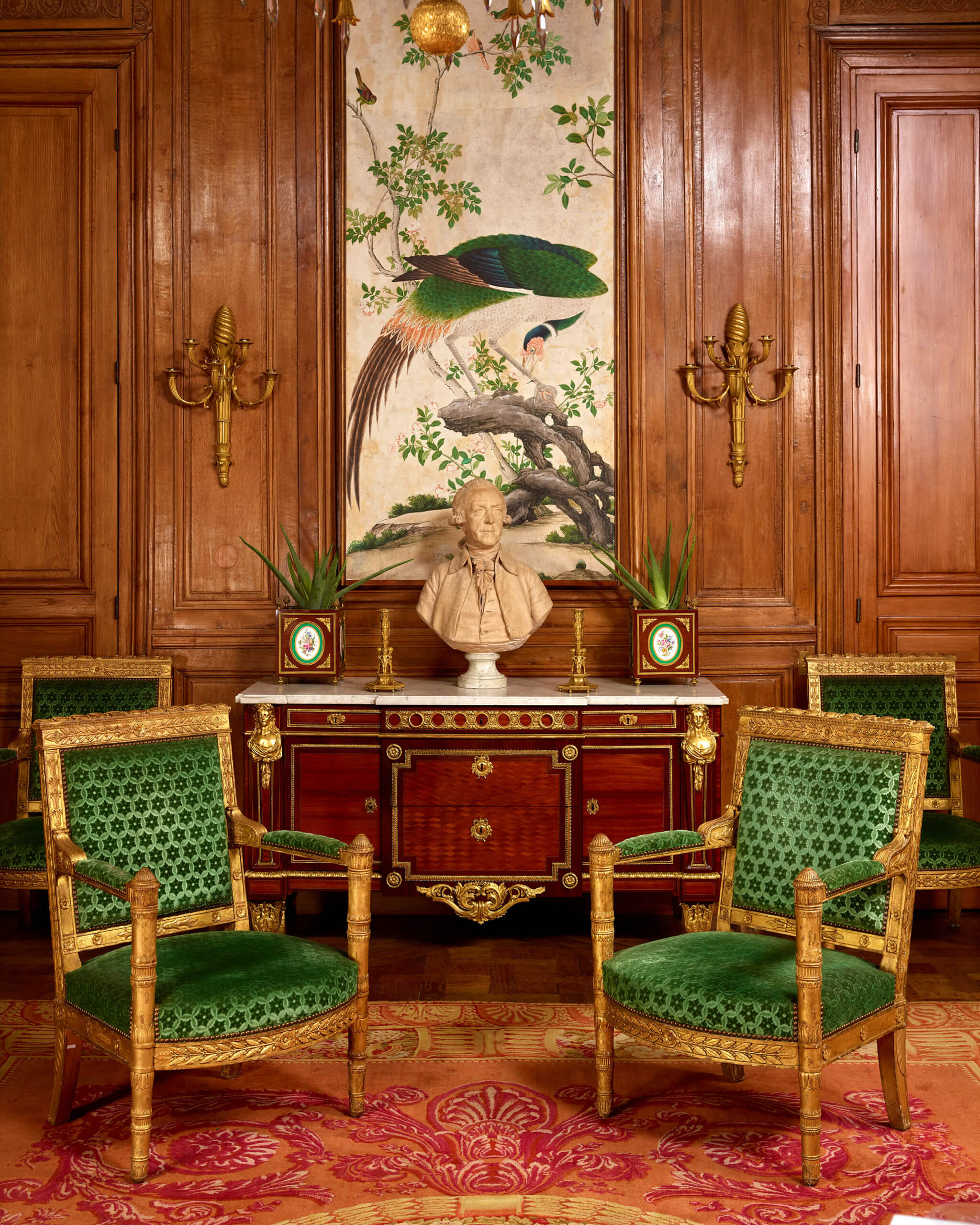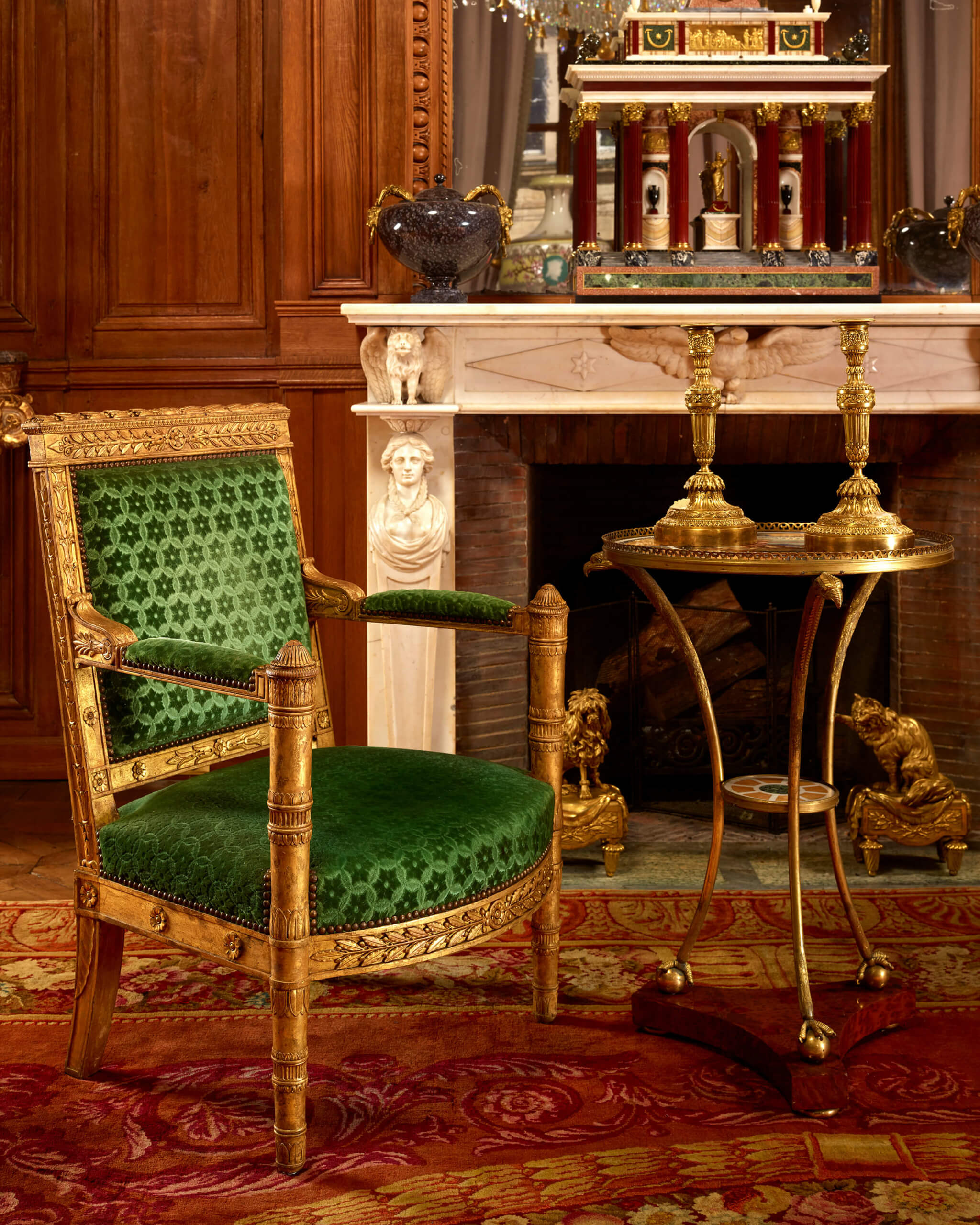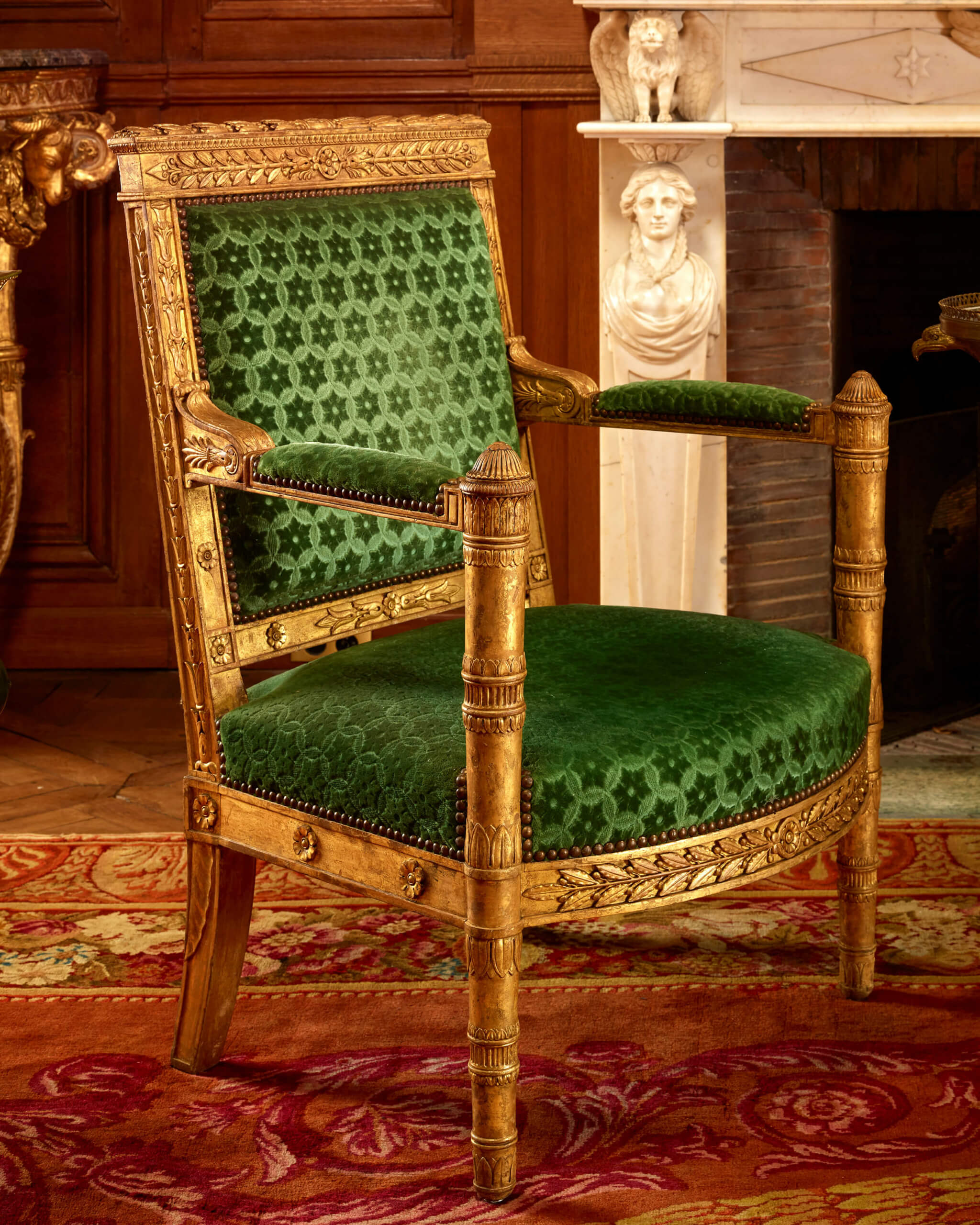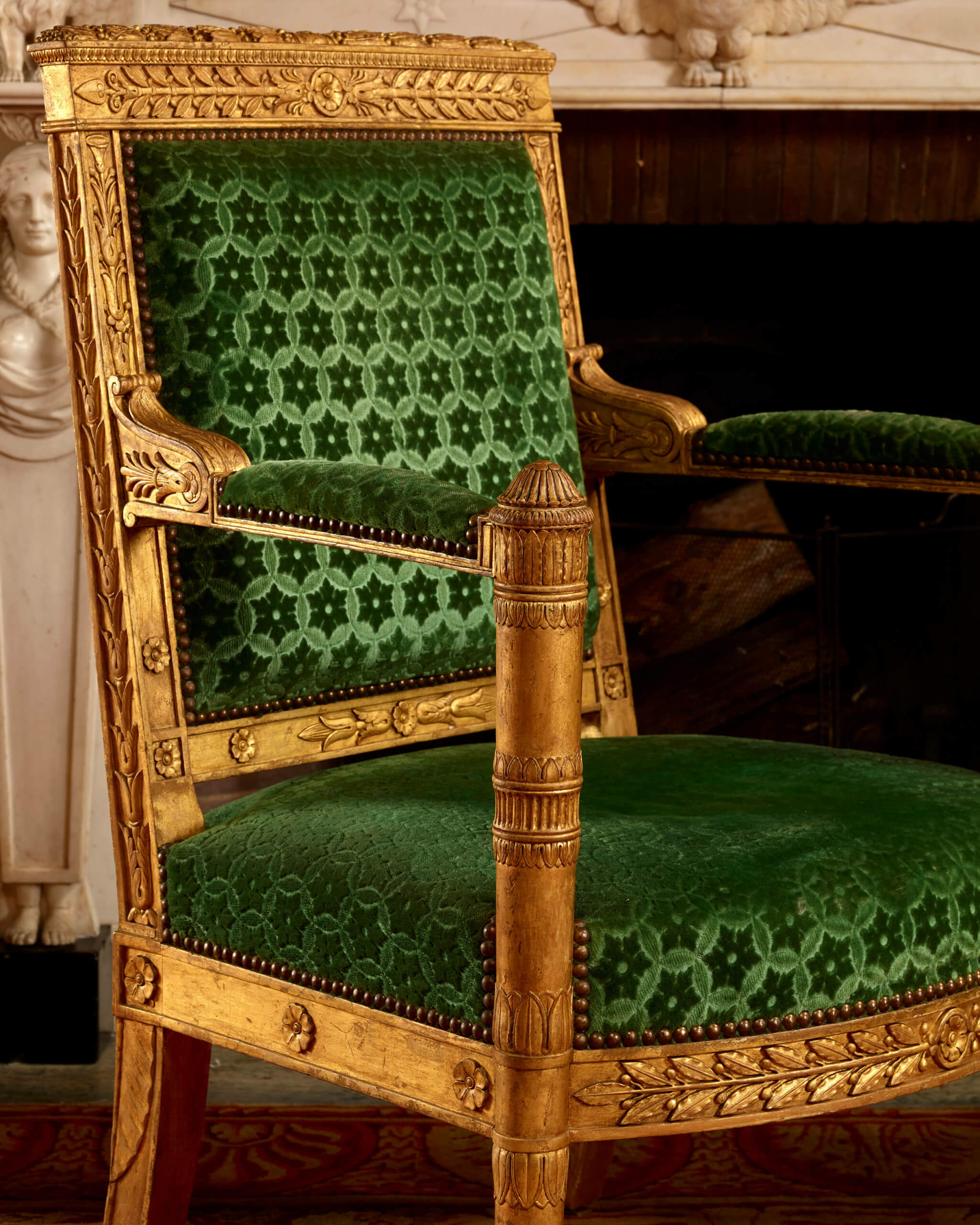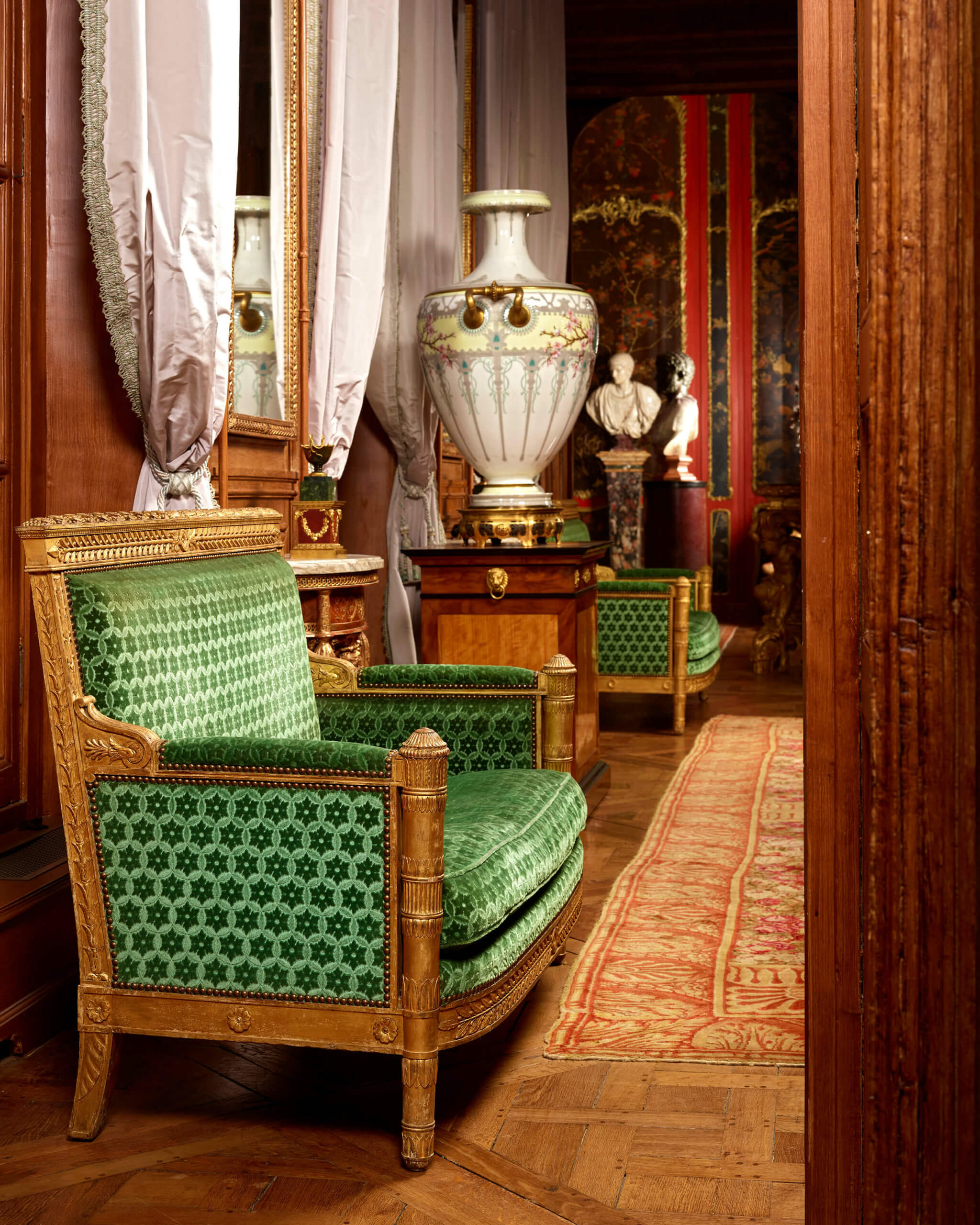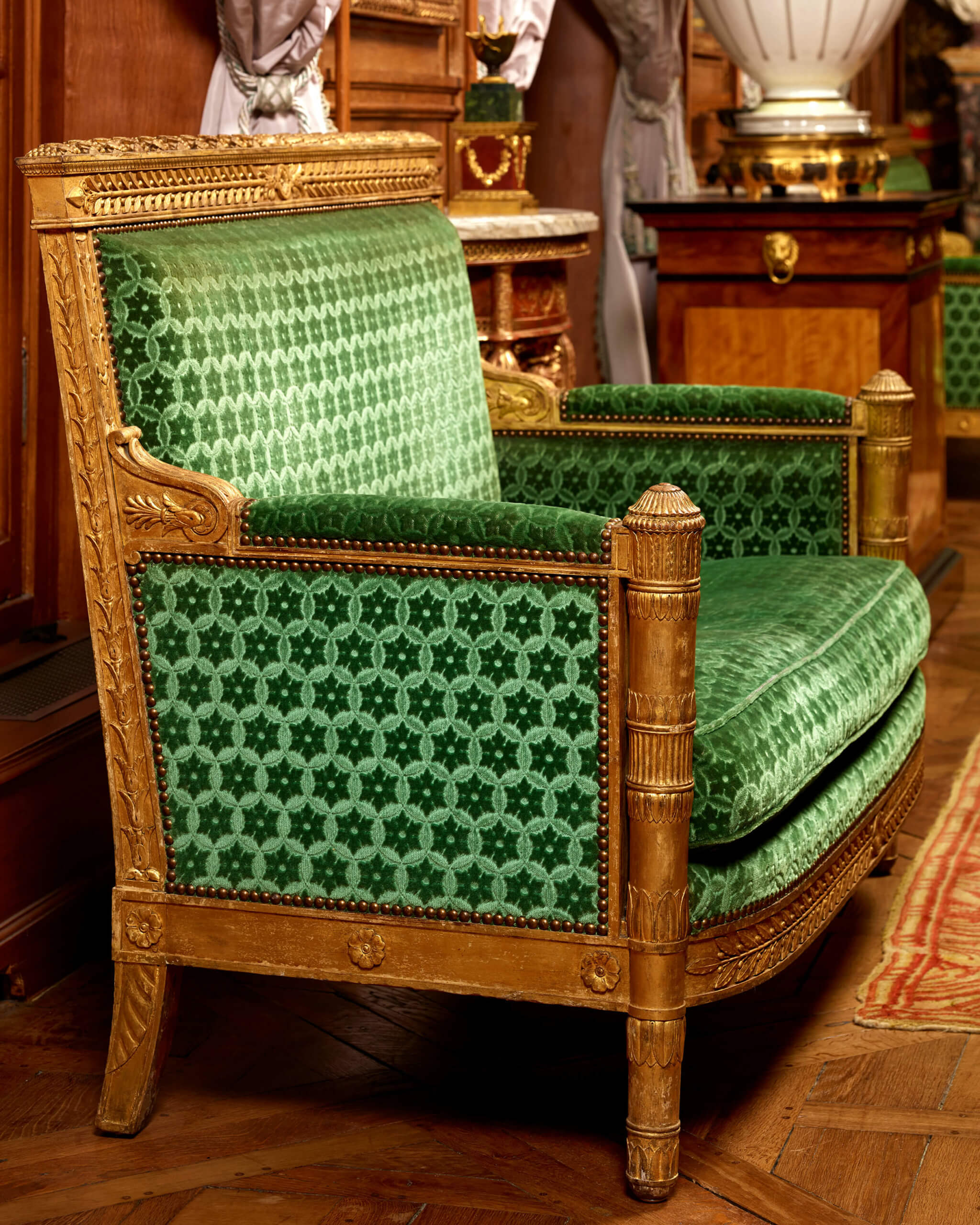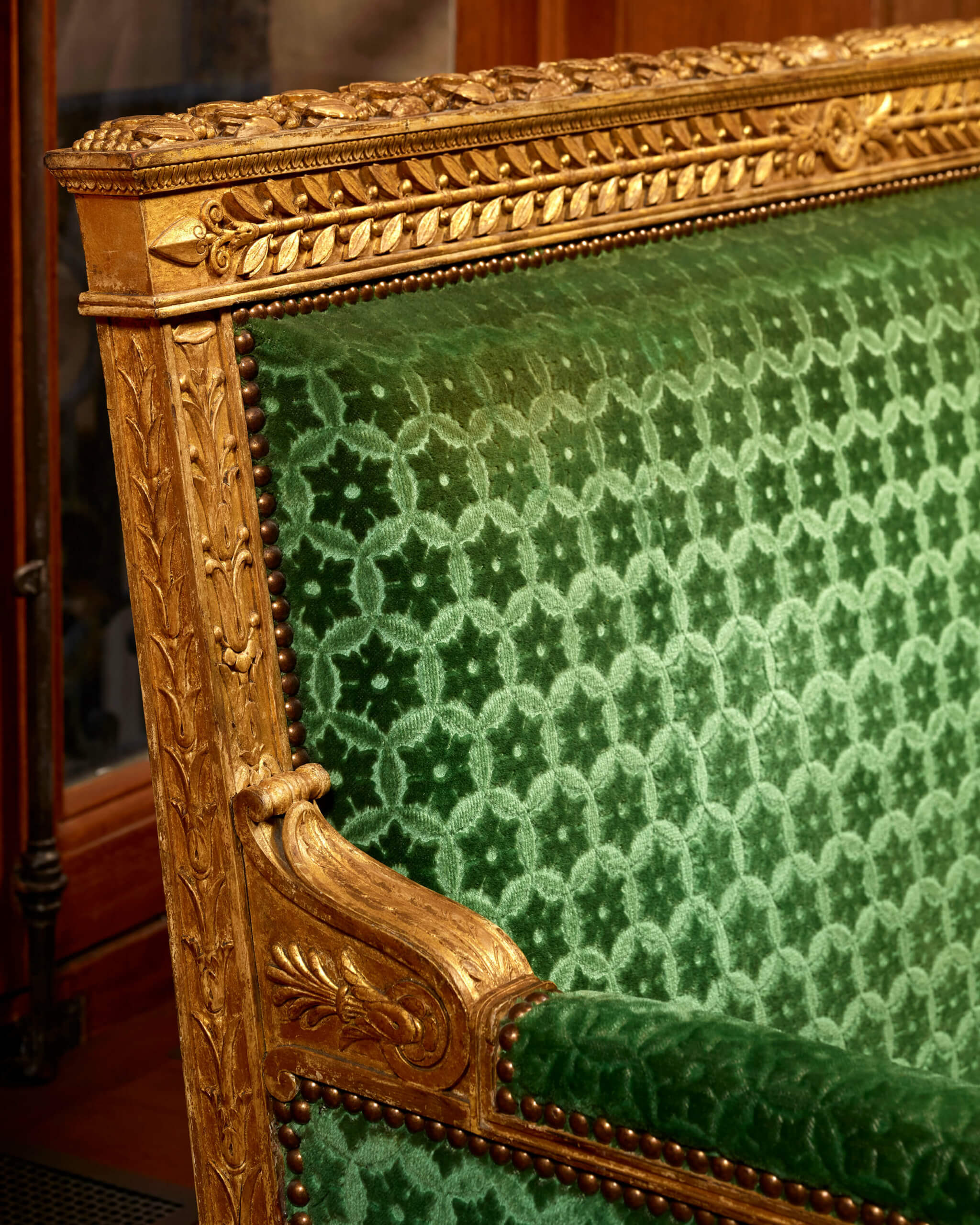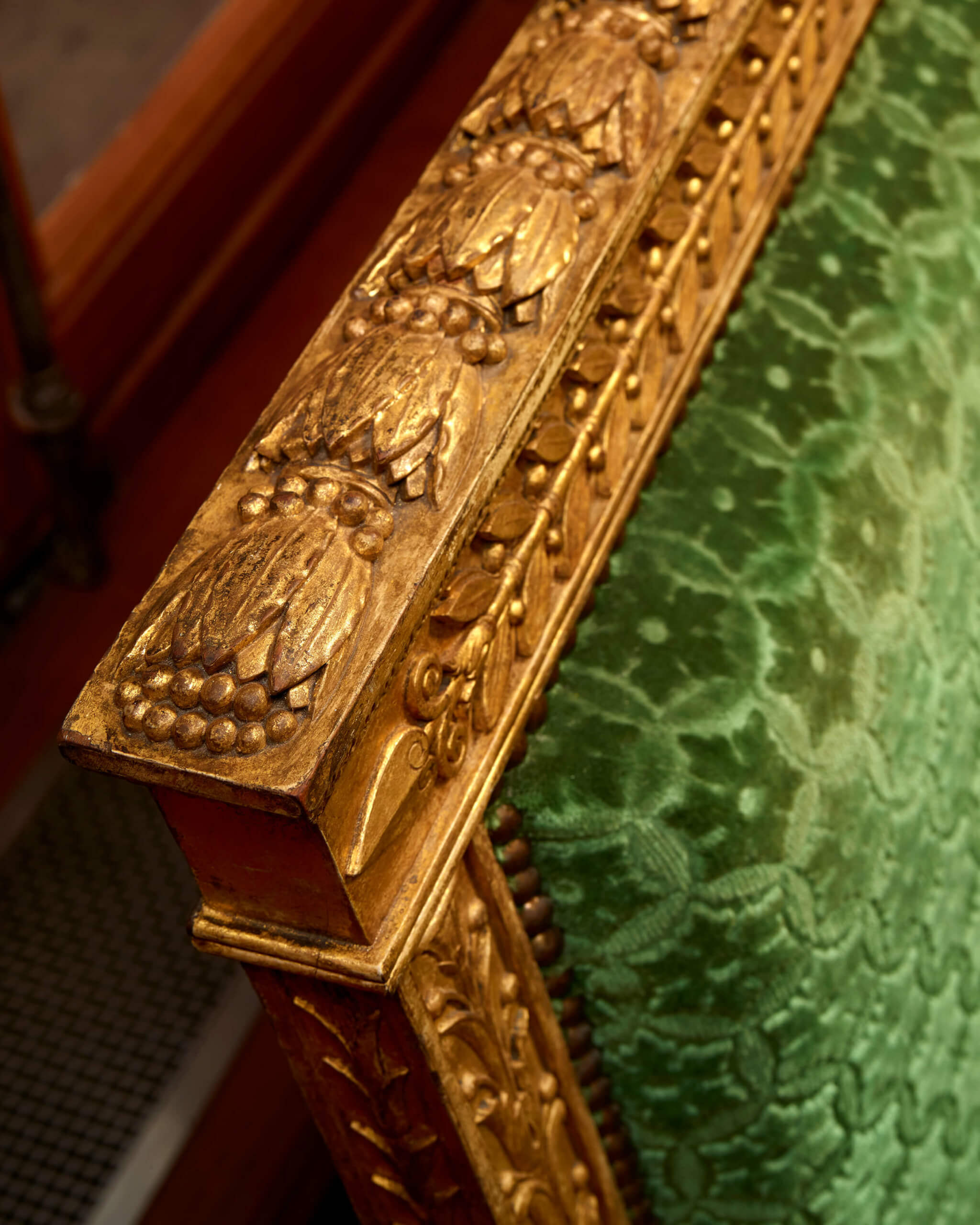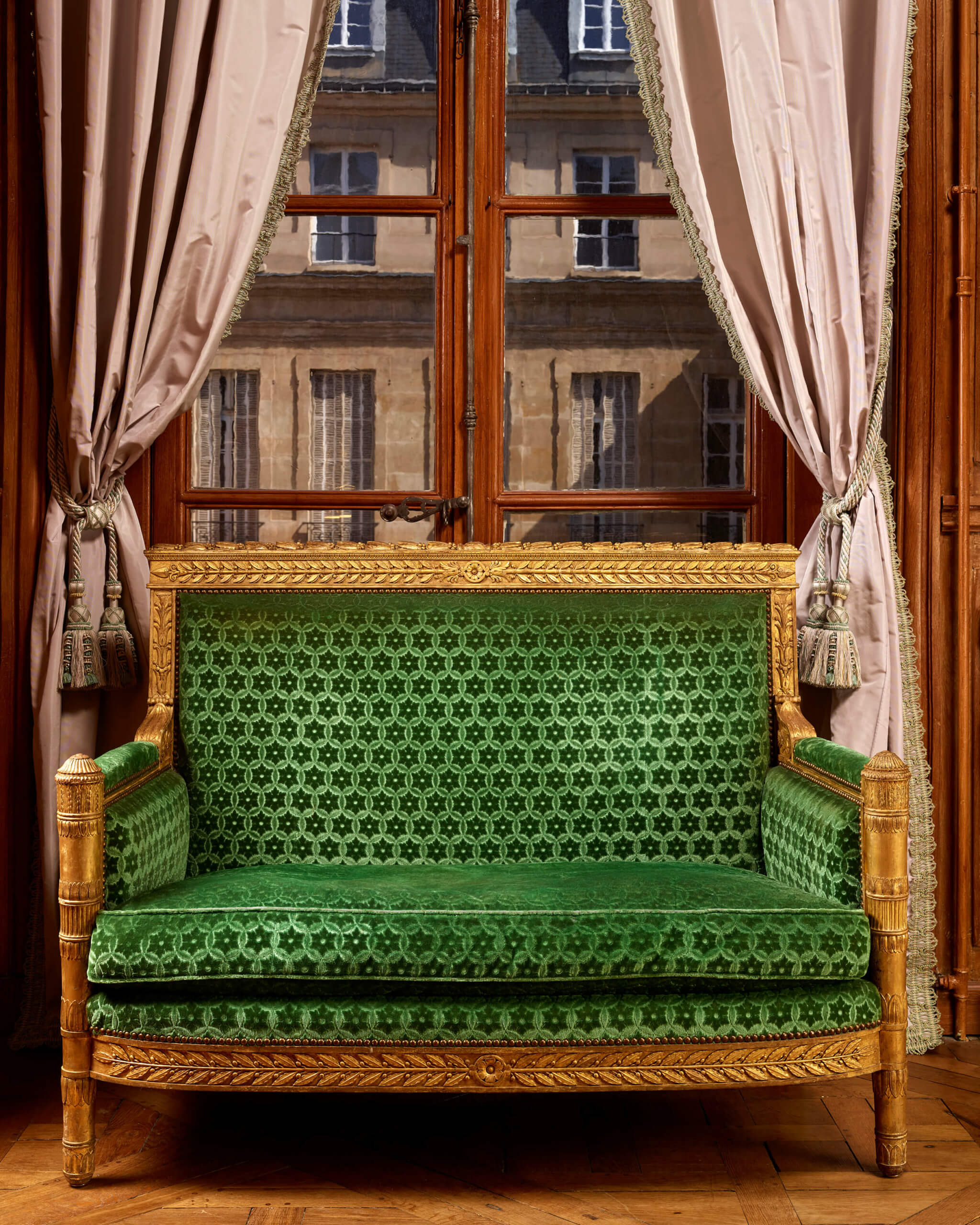

Carved and gilt wood.
Tête-à-tête: H. 98 cm. (38 ½ in.); W. 125 cm. (49 ¼ in.); D. 66 cm. (26 in.).
Armchair: H. 98 cm. (38 ½ in.); W. 67 cm. (26 ½ in.); D. 55 cm. (21 ¾ in.).
STAMP: “Jacob-Desmalter, rue Meslée”
MARK IN INK: “Werner”
LABEL: “Maréchal Davout, rez-de-chaussée, nouvelle chambre à coucher”.
PROVENANCE: delivered around 1810-1811 for the Parade Room of Marshal Davout’s wife, Princess of Eckmühl and Duchess of Auerstaedt, within the Hôtel d’Eckmühl, also known as the Hôtel de Monaco, 121 rue Saint-Dominique in Paris (today n°. 57).
The “duchess” Davout was the widow of Louis-Nicolas Davout (1770-1823), Marshal of the Empire, Prince of Eckmühl and Duke of Auerstaedt. Brilliant soldier, endowed in Germany and Poland, Davout was the youngest and the third most rich marshal of the Empire.
The grand hôtel de Monaco was constructed by Alexandre-Théodore Brongniart, between 1774 and 1777 for Marie-Catherine de Brignole-Sale, the wife of Honoré III of Monaco and, successively, the Prince of Condé. The marshal trusted the hôtel’s redecoration to Alexandre Dufour (1760-1835), close collaborator of Percier and Fontaine.
Followed by a team of some of the most brilliant specialists of his time, Alexandre Dufour, had succeeded in making the hôtel d’Eckmühl a global work of art which enthralled his contemporaries. Everything there was perfect, sophisticated and magnificent, without the slightest hint of dissonance.
The seats of the Parade Room of Marshal Davout’s wife are proof this achievement as they are the epitome of Jacob-Desmalter’s seating artistry, which reached its highest level of quality during the Empire period. The laurel bundles carved into the piece at the top of the backrests are very inventive. They stand out from the classic flat surfaces of the period, and recall the sculpture of the great seats of the eighteenth century.
